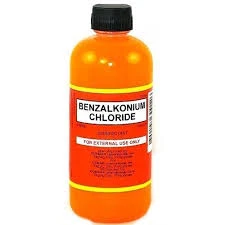diethylenetriamine penta methylene phosphonic acid
Understanding Diethylenetriamine Penta Methylene Phosphonic Acid Properties, Applications, and Benefits
Diethylenetriamine penta methylene phosphonic acid (DTPMPA) is a highly effective chelating agent composed of a diethylene triamine backbone with five phosphonic acid groups
. This compound is renowned for its ability to bind metal ions, which renders it invaluable in various industries, such as water treatment, oil production, and agriculture.One of the most notable features of DTPMPA is its exceptional ability to inhibit scale formation and corrosion in water systems. Scale build-up can lead to severe operational issues, including energy efficiency loss and equipment damage. By chelating hard water ions like calcium and magnesium, DTPMPA prevents these ions from precipitating and forming scale deposits. This function is particularly critical in cooling towers, boilers, and heat exchangers, where mineral buildup can severely impede performance.
In addition to its scale inhibition properties, DTPMPA also excels as a corrosion inhibitor. In industrial settings, the prevention of corrosion is crucial for maintaining the integrity of pipelines and machinery, and DTPMPA has proven to be effective in creating a protective film over metal surfaces. This film significantly reduces the rate of corrosion caused by oxygen and other corrosive agents, thus extending the lifespan of equipment and reducing maintenance costs.
diethylenetriamine penta methylene phosphonic acid

Another prominent application of DTPMPA is in the oil and gas industry. Here, it is used to control scale formation during the extraction and transportation of hydrocarbons. The presence of dissolved minerals in the extraction fluids can lead to the deposition of unwanted hard scales in pipelines and production equipment. By using DTPMPA, companies can mitigate these issues, ensuring a smoother operation and minimizing downtime due to maintenance.
In agriculture, DTPMPA is utilized to enhance the effectiveness of fertilizers. By chelating essential nutrients such as iron, zinc, and manganese, DTPMPA improves nutrient availability to plants. This can lead to better crop yields and healthier plants, making it a valuable addition to many fertilizers. Furthermore, it helps to prevent the fixation of these nutrients in the soil, allowing them to be more readily absorbed by plant roots.
Moreover, DTPMPA is characterized by its environmental compatibility. Unlike some older chelating agents, which can pose environmental hazards due to their persistence and toxicity, DTPMPA is considered to be safer for both humans and the ecosystem. This makes it a preferred choice in the modern landscape of chemical applications, aligning with the growing emphasis on sustainable and eco-friendly practices.
In conclusion, diethylenetriamine penta methylene phosphonic acid is an essential compound with diverse applications across multiple industries. Its ability to inhibit scale formation and corrosion, enhance nutrient availability in agriculture, and its environmentally friendly nature position DTPMPA as a key player in advancing industrial efficiency and sustainability. As research continues and new applications are explored, the importance of DTPMPA is likely to increase even further in the coming years.
-
Pbtc Scale InhibitorPBTC: A Scale Protector for Industrial Water TreatmentNewsAug.05,2025
-
Organic Phosphonate: An Efficient Defender in the Field of Scale InhibitionNewsAug.05,2025
-
Hydrolyzed Polymaleic Anhydride: Green Pioneer in Scale Inhibition FieldNewsAug.05,2025
-
PAPEMP Polyamino Polyether Methylene Phosphonic Acid For SaleNewsAug.05,2025
-
Flocculant Water Treatment: A Pioneer in Purification in the Field of Water TreatmentNewsAug.05,2025
-
Benzyl Isothiazolinone: An Efficient and Broad-Spectrum Antibacterial Protective GuardNewsAug.05,2025





